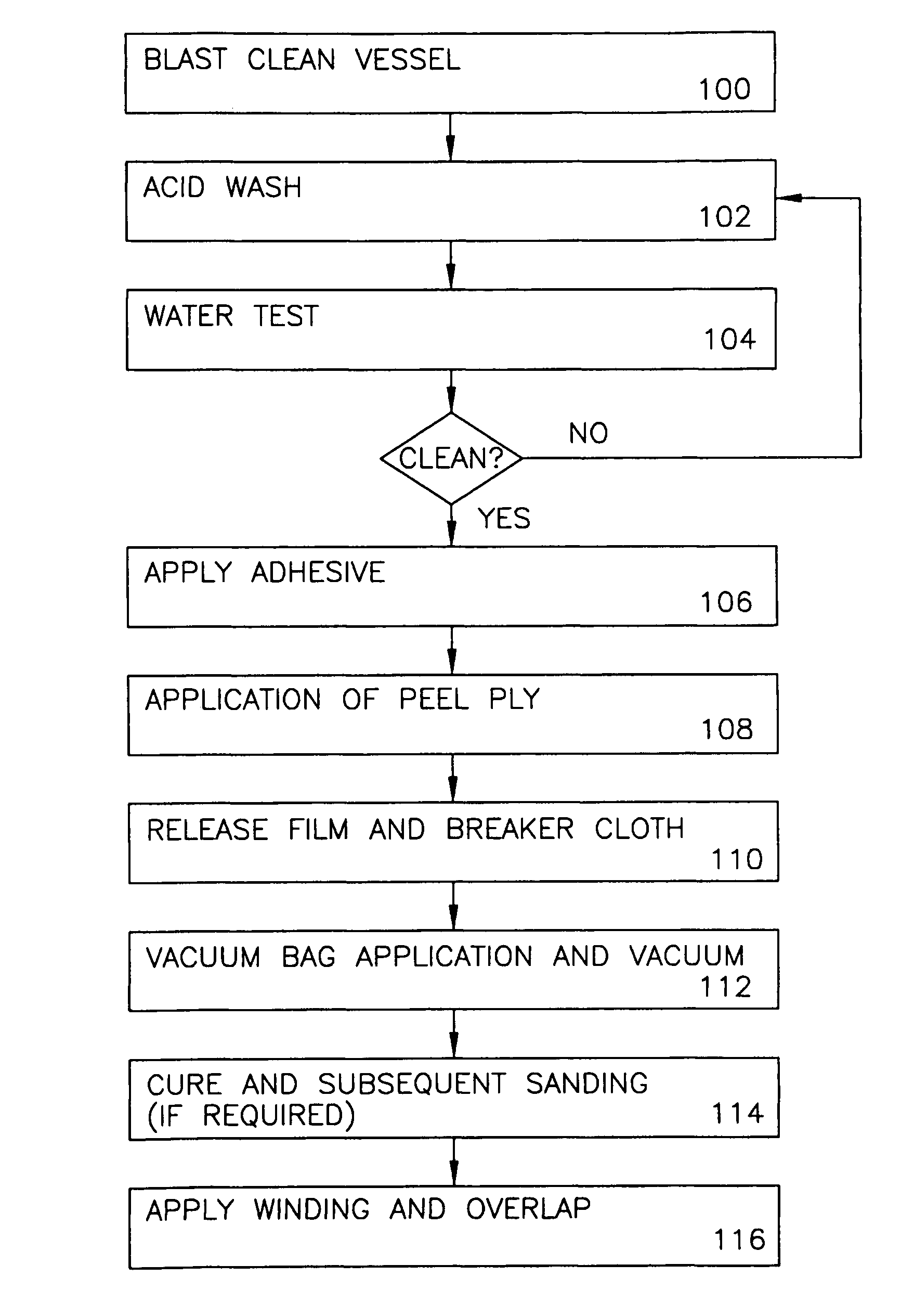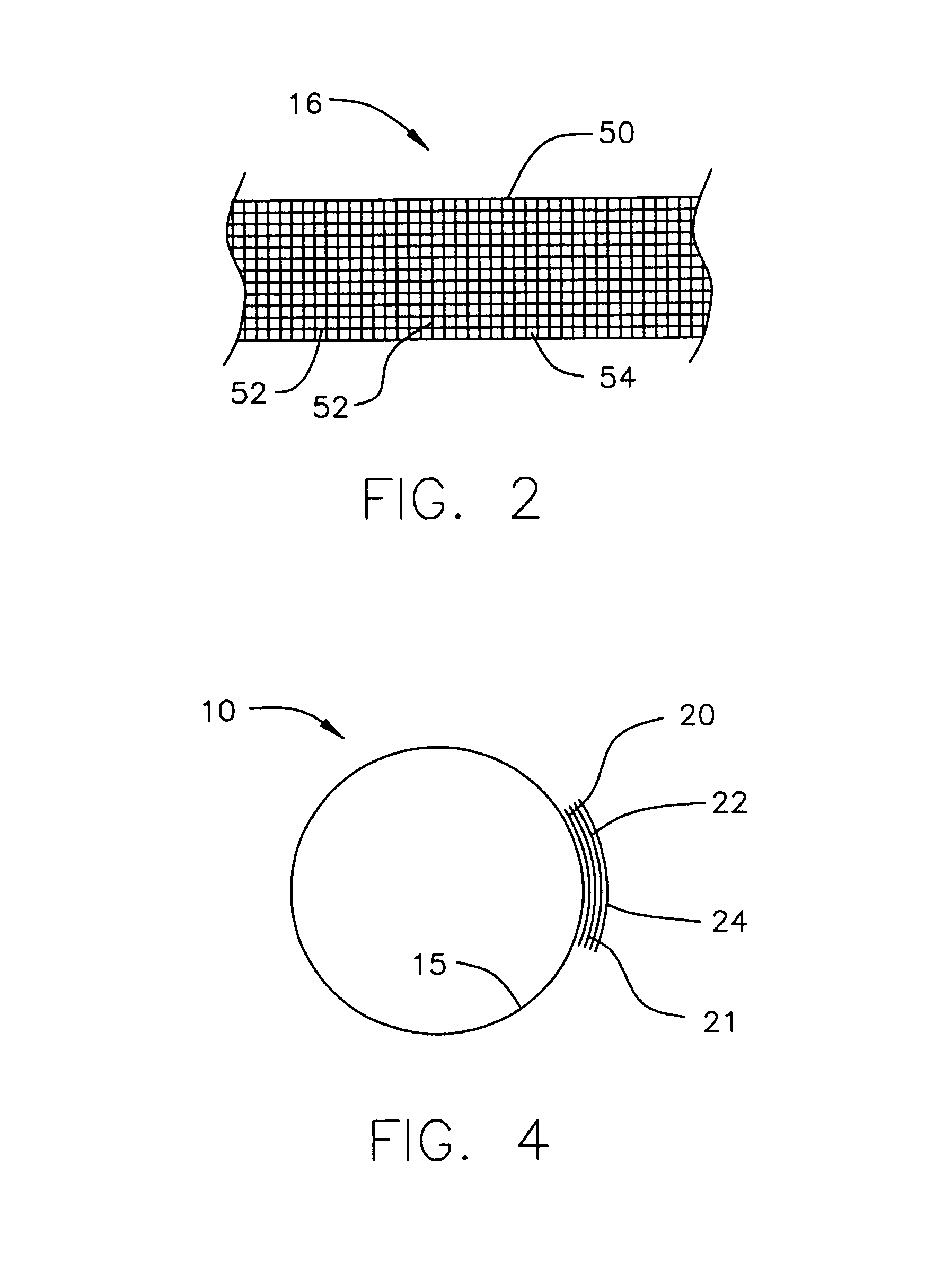Method for making a multilayer composite pressure vessel
a pressure vessel and composite technology, applied in the field of containers, can solve the problems of limited applicability, high manufacturing cost, and metal pressure vessel construction, and achieve the effect of improving adhesion and adhesion
- Summary
- Abstract
- Description
- Claims
- Application Information
AI Technical Summary
Benefits of technology
Problems solved by technology
Method used
Image
Examples
Embodiment Construction
[0020]Referring now to the drawings, and initially to FIG. 1, it may be seen that the general reference numeral 10 identifies a pressure vessel embodying the present invention. Pressure vessel 10 (also referred to as vessel 10) has a main portion 11 that bounds an internal chamber or interior 12 of vessel 10, and a stem or neck portion 13 that projects out of the main portion 11 along an axis and is hollow to define a passage 14 for establishing communication between the interior 12 of the vessel 10 and its exterior.
[0021]As illustrated in FIG. 1, the vessel 10 is of a multilayer or composite structure in that it includes an inner liner 15 and an outer jacket or overwrap 16 that surrounds the liner 15 and, more particularly, at least a main portion 11 of the liner that bounds interior 12. Liner 15 used in the vessel 10 of the present invention is preferably very thin, such that its thickness is chosen to be just above the minimum needed to prevent permeation of the medium contained ...
PUM
| Property | Measurement | Unit |
|---|---|---|
| temperature | aaaaa | aaaaa |
| temperature | aaaaa | aaaaa |
| adhesive | aaaaa | aaaaa |
Abstract
Description
Claims
Application Information
 Login to View More
Login to View More - R&D
- Intellectual Property
- Life Sciences
- Materials
- Tech Scout
- Unparalleled Data Quality
- Higher Quality Content
- 60% Fewer Hallucinations
Browse by: Latest US Patents, China's latest patents, Technical Efficacy Thesaurus, Application Domain, Technology Topic, Popular Technical Reports.
© 2025 PatSnap. All rights reserved.Legal|Privacy policy|Modern Slavery Act Transparency Statement|Sitemap|About US| Contact US: help@patsnap.com



